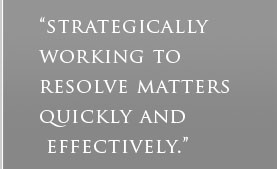|
Court
may wipe out Measure E victory, keep the Midway District’s
30-foot height limit in place
By
Jennifer Van Grove, Dec 3, 2021
Judge
tentatively rules that the city of San Diego should have studied
the environmental impacts of taller buildings before placing
Measure E on the November 2020 ballot.
A
San Diego Superior Court judge has signaled that she may invalidate
a voter-approved ballot measure that sought to strike the
Midway District from the city’s coastal zone, remove
the 30-foot building height limit and serve as a catalyst
for neighborhood revitalization.
Thursday,Superior
Court Judge Katherine Bacal issued a tentative ruling, agreeing
with petitioner Save Our Access that the city should be barred
from implementing Measure E. The city, she wrote, improperly
placed the measure on the November 2020 ballot because it
did not study the environmental impacts of taller buildings.
In a Friday afternoon hearing, Bacal considered the city’s
rebuttal but did not make a final determination.
“I
think the judge understands the case very well,” Everett
DeLano III, a lawyer representing Save Our Access, told the
Union-Tribune after the hearing. “I feel very good that
the judge is getting what we’ve been saying, and that
indeed, at the end of the day, (the city) should have done
an environmental review before they went down this path.”
A
spokeswoman for the City Attorney’s Office said that
the office does not comment on tentative rulings.
Last
year, San Diego voters passed Measure E, an ordinance that
changes the definition of the coastal zone in the city’s
municipal code, as defined by Proposition D in 1972, to exclude
what’s known as the Midway-Pacific Highway Community
Plan area. The approval seemingly paved the way for buildings
taller than 30 feet in the 1,324-acre area sandwiched between
the San Diego River and the airport that includes the city’s
sports arena holdings.
However,
the legal challenge from Save Our Access has kept the height
change from going into effect. In the group’s August
2020 petition for a writ of mandate, the organization contested
the legality of Measure E, arguing that the city failed to
study its environmental impacts, as required by the California
Environmental Quality Act.
The
case centers around whether city planners considered the impacts
of buildings higher than 30 feet when they prepared the Midway-Pacific
Highway Community Plan Update. The 30-year planning document,
approved in 2018, allows for major land-use changes and a
population boom of 23,660 people. The plan’s associated
environmental analysis did not specifically study buildings
over 30 feet.
Still,
Deputy City Attorney Benjamin Syz contended in court that
the 2018 document sufficiently covers the environmental implications
of Measure E. Planners, he said, analyzed factors such as
greenhouse gas emissions, traffic and air quality in the plan’s
zoning changes, which allow for increased density.
“We
analyzed land use on a level that assumed full build-out (of
the community plan update),” Syz told the judge. “Every
subject area has been analyzed with the assumption that the
height limit did not exist.”
Thursday’s
preliminary decision sided with Save Our Access.
In
her tentative ruling, Judge Bacal zeroed in on potential visual
impacts of Measure E, highlighting language used in the community
plan’s environmental review, or what’s called the
program EIR.
“The
program EIR’s use of the language ‘existing’
framework and that it would ‘blend with’ the ‘established’
height regulations show (planners) considered the existing
limitations, and not the maximum structure heights mandated
by the proposed base zones if the 30-foot limitations were
removed,” she wrote.
Friday
in court, the judge did not appear to be swayed from her position,
but said she would take the matter under submission.
“I
should be issuing the ruling very shortly,” she said.
The
potential decision, which could be challenged on appeal, has
unknown implications for the 48 acres of land that the city
owns around Pechanga Arena. Friday, the city will close the
books on the first phase of a second solicitation process
in which at least five teams are expected to respond.
Although
applicants were made aware of the pending litigation, some
of their conceptual proposals envision housing and commercial
buildings, and even new arenas, that stretch well above 30
feet.
“I’m
shattered. Our community has been looking forward to today
with hope and optimism around the sports arena site bids coming
in, and this ruling has completely upended all of that,”
said Dike Anyiwo, who is the vice chair of the community planning
group and lives in the Midway District. “I cannot fathom
what outcome the proponents of this lawsuit were seeking to
achieve by undermining the very clear direction that 56.56
percent of voters set when Measure E was contested last November.”
top
|











